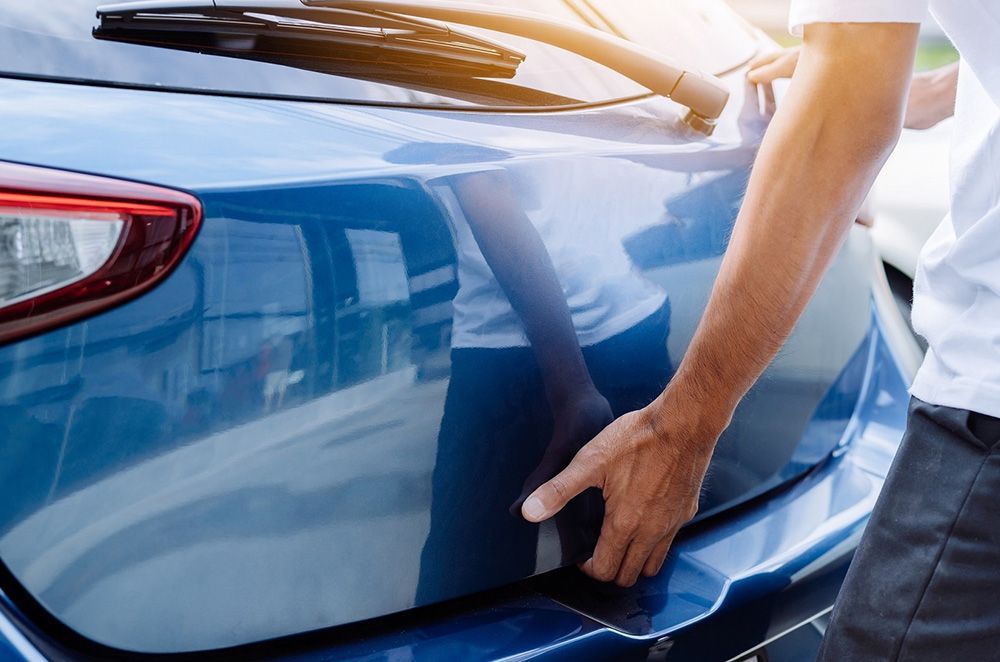My Trunk Door Won't Open, What to Do
Discovering that your trunk door won't open can be a frustrating situation, especially when you need access to your vehicle's storage space. Whether you're dealing with a malfunctioning key fob, a stubborn trunk release mechanism, or potential electrical issues, understanding the root cause is crucial for resolving the issue efficiently. In this guide, we'll walk through common reasons why trunk doors fail to open and provide step-by-step solutions to help you regain access quickly and safely. Let's dive into troubleshooting your trunk door issue and getting you back on the road smoothly!
Reach out to us for Lockout Services!
Key Fob Battery
A key fob with a dead battery can often be the culprit when your trunk door refuses to open. The key fob sends a signal to the car's trunk release mechanism, allowing it to unlock and open the trunk electronically. When the battery is dead, this signal transmission fails, preventing the trunk from unlocking. Replacing the key fob battery is a straightforward fix that can restore normal trunk operation. Ensure you have the correct battery type for your key fob model and follow the manufacturer's instructions for replacement to regain convenient access to your trunk.
Trunk Release Mechanism
The trunk release mechanism includes various components designed to allow easy access to your vehicle's trunk. This typically includes a button inside the car's cabin, often located on the dashboard or near the driver's seat, and an exterior trunk release handle or lever on the trunk lid itself. If your trunk door won't open, check these mechanisms for any signs of damage or obstruction. Clear any debris or obstructions and ensure that these components operate smoothly. Proper maintenance and occasional lubrication can help prevent issues with the trunk release mechanism in the future, ensuring reliable access to your trunk whenever needed.

Trunk Lock Cylinder
The trunk lock cylinder serves as a manual override for opening the trunk when electronic methods fail. It's typically located near the trunk keyhole and allows you to unlock the trunk using a physical key. If your trunk door won't open electronically, try using the trunk key to manually unlock it through the trunk lock cylinder. Ensure the key turns smoothly without resistance or jams. If there are any signs of damage or wear on the trunk lock cylinder, consider having it inspected or replaced by a professional locksmith or automotive technician to restore full functionality.
Interior Trunk Release
In many vehicles, there's an interior trunk release lever or button designed for emergency situations where occupants need to exit the trunk from inside the car. This safety feature is often mandated by regulations to prevent entrapment. If your trunk door won't open from the outside, check for the presence and functionality of the interior trunk release mechanism. Locate the lever or button typically located near the driver's seat or inside the trunk itself. Activate the interior trunk release to see if it allows the trunk to open. Ensure this mechanism operates smoothly and that there are no obstructions preventing its function.
Electrical Issues
Electrical issues can also prevent your trunk door from opening. Check the fuse box for any blown fuses related to the trunk release circuit. Blown fuses can disrupt power to the trunk release mechanism, causing it to malfunction. Replace any blown fuses with ones of the same rating and type. Inspect the wiring harnesses and connectors related to the trunk release for signs of damage, corrosion, or loose connections. Address any issues found with wiring to restore proper electrical function to your trunk door.
Mechanical Obstructions
Mechanical obstructions in or around the trunk area can prevent the trunk door from opening. Inspect the trunk seal and surrounding areas for any objects or debris that may be obstructing the trunk lid's movement. Clear away any debris and ensure the trunk lid can open and close freely without obstruction. Be cautious when removing obstructions to avoid damaging the trunk or surrounding components. Regularly clean the trunk area and keep it free from clutter to prevent future obstructions.
Conclusion
Dealing with a trunk door that won't open can be inconvenient, but understanding the potential causes and troubleshooting steps can help you resolve the issue effectively. Whether it's a simple fix like replacing a key fob battery or a more complex issue such as electrical problems or mechanical obstructions, taking prompt action is crucial to regain access to your vehicle's trunk. By following the troubleshooting steps outlined in this guide—checking the key fob battery, inspecting the trunk release mechanisms, using the trunk lock cylinder, addressing electrical issues, and clearing mechanical obstructions—you can often resolve the problem and restore functionality to your trunk door.
Call Us Any Time!




